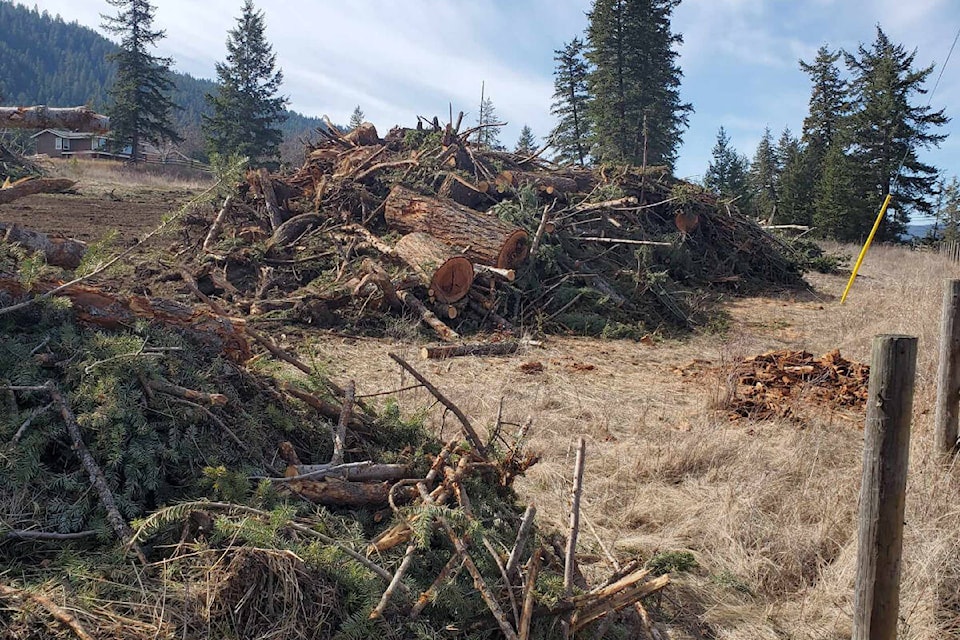The Ministry of Forests has confirmed only three to four per cent of residual fibre reports are verified in the field.
A ministry spokesperson told Black Press Media, in an emailed response, 75 to 100 per cent are given an office review and three to four per cent are checked in the field.
“An office review of survey data checks for consistency with policy, as many survey errors can successfully be detected from the office.”
Limits are set by the province for the amount of residual fibre left following harvesting, as well as requirements for measurement, reporting and how much companies are billed for the residual left behind.
Between 2017 and 2023, the residual level after harvest declined by 37 per cent on the Coast and 24 per cent in the Interior, meaning more fibre was hauled out of the bush with less slash burning taking place, the ministry noted.
In Budget 2024, the Forest Enhancement Society of B.C. is receiving $60 million to increase the use of low-value or residual fibre from logging by helping make it economic for material to be brought in for milling or used as biomass.
Tsi del del Enterprises owns two grinders and leases one to produce hog fuel, biomass and pulp chips by grinding primarily brush piles.
Biomass from Tsi Del del Enterprises goes to the Drax pellet plant in Williams Lake and hog fuel goes to Atlantic Power to burn and generate hydro.
Hog fuel is the bottom of the barrel as far as fibre goes, said Joe Webster, Tsi Del Del biomass operations manager.
“It’s the lowest quality product. It’s generally a green product so it’s got a lot of bark and needles and maybe even some dirt.”
Webster estimated on an annual basis they supply 20 to 25 per cent of the Atlantic Power’s hog fuel.
Fibre generated from harvesting after the 2017 wildfires has been a good product for biomass because it’s dry, clean, and there is no bark or needles, he said.
There is an interesting dilemma when it comes to reducing wildfire hazards because sometimes potential biomass is burned as a result.
If people have bush piles on their property, he encouraged them to call him.
“It depends on how close it is to town, but it’s always worth a phone call,” he said, noting they have trucks and hire contractors that haul for them as well.
In an emailed response, Drax communications specialist Megan Hopgood said 80 per cent of the fibre for the pellet plant in Williams Lake comes from sawdust and other sawmill residues and the remaining 20 per cent from forest residues, including low grade roundwood, tops, branches and bark.
When asked about allegations of sourcing fibre from old growth forests, Hopgood said Drax made the decision in October 2023 to stop sourcing wood fibre directly from old growth deferral areas.
“Work to implement this decision across our supply chain is ongoing,” she said.
READ MORE: MLA, chamber add support for long-term, sustainable agreement for Atlantic Power
READ MORE: Wildfire risk reduction thanks to Cariboo forest enhancement projects
Don’t miss out on reading the latest local, provincial and national news offered at the Williams Lake Tribune. Sign up for our free newsletter here.
